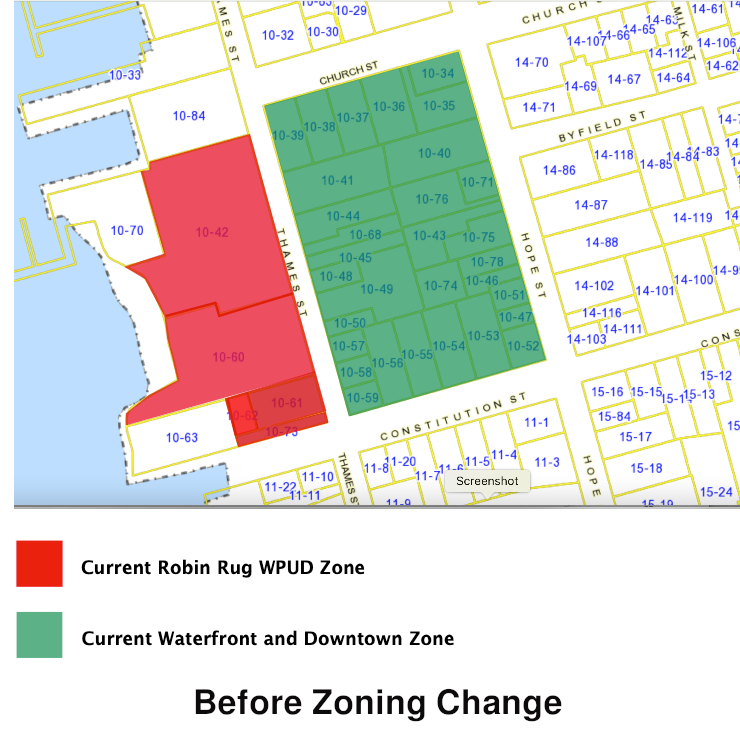Planning Board Considers Bristol Yarn Mill on 1/13/2021
AN INFORMATIONAL MEETING WILL BE HELD BEFORE THE PLANNING BOARD ON JANUARY 13, 2022 at 7:00PM. It will be a ZOOM meeting. We urge you to attend this meeting at:
https://zoom.us/j/95017516914?pwd=c09JRU5PRERiQXdLOFhSZWlKc1Vndz09
Among the controversial issues that are integral to the developer’s proposal are: re-zoning requests, density and size of residential units, traffic impact, Bristol’s requirements for commercial/institutional/public use, and Bristol’s affordable housing requirements.
Here is what’s proposed for our historic downtown block – a change in zoning that will allow additional land to become eligible for increased density and buildings.
Bristol Yarn Mill/Robin Rug was approved for increased density from 76 units to 98 units years ago when it was established as a Waterfront Planned Unit Development Zone (WPUD). Planned Unit Developments allow higher density building in historic mill buildings and allow additional new buildings to be built. Developers are seeking more density at 151 units in the complex. This is an increase of 54% over previous approval.
In addition, the developer is now seeking to change NINE additional, unrelated lots from zoned Waterfront and Downtown Districts to additional WPUD zoning. These lots are separate from the mill and are on the interior of the block that borders Thames, Constitution, Hope and Church Streets.
The plan states those properties will be used only as surface parking for the mill residents. If they are to be used solely as surface parking, a deed restriction placed on these lots limiting them to surface parking would satisfy that plan with NO REZONING to WPUD necessary.
A zoning change will allow the owners to build on and increase the density in the area east of Thames Street, as well as increasing the density of the historic mill. Density is based on square feet of land per unit.
Robin Rug is a historic mill complex that has received a special WPUD zoning designation in Bristol.* PUD designation is given to historic mills only – not additional nearby lots. (Bristol Zoning Code)
Rhode Island General Laws, Bristol RI Code of Ordinances; Sec. 28-284 Land development projects—Urban rehab land development project states:
(a) Purpose. The rehabilitation of deteriorated, under-utilized and inefficient historic and/or nonconforming structures of conservation concern is of primary importance to the health, safety and welfare of town residents. It is vitally important for the economic well-being of town that these resources be rehabilitated for long term reuse.
(b) Zones where mandatory and optional.
(1) Mandatory. A rehab LDP shall be mandatory for any development in the rehab LDP overlay zone.
*(2) Optional. A rehab LDP shall be permitted in the M zone or the W zone, but only on a parcel that contains an existing building formerly used for commercial or manufacturing use, of at least 20,000 square feet GFA. New construction may take place in addition to the existing building, provided that the existing building is rehabilitated and used as part of the LDP.
Author’s Note: If the zoning is changed from Downtown or Waterfront to WPUD, multifamily building with increased density could be allowed on the 9 lots.
*If you look up WPUD Zoning in the Bristol RI – Code of Ordinances/Chapter 28 - Zoning, you will not find the definition of a WPUD by Bristol’s zoning laws. Per Diane Williamson, Director Development for Bristol, LDP is the same as PUD, as defined by is found under Chapter 28-284, Bristol Zoning Laws.


